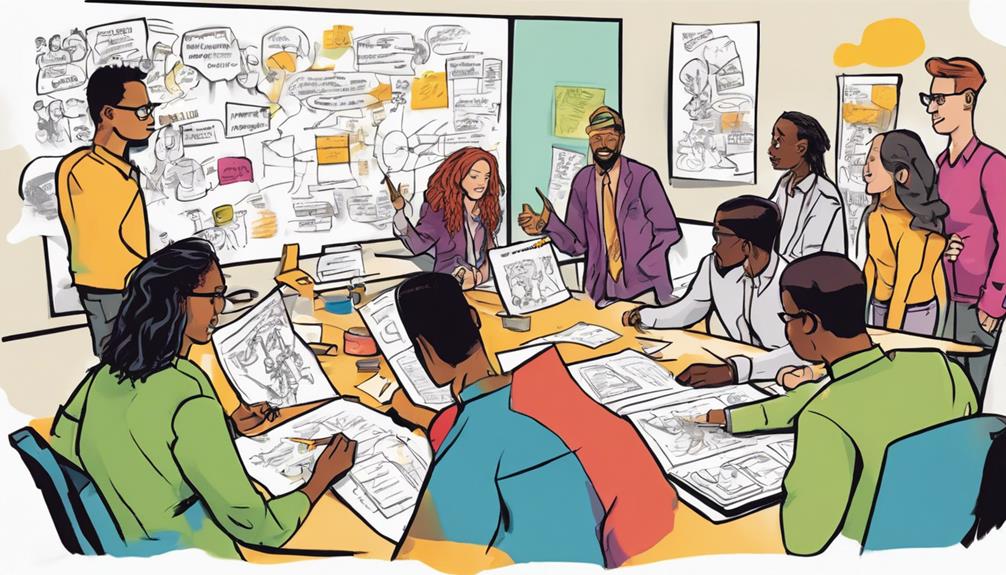If you're looking to enhance your design thinking skills, check out IDEO U for a hands-on approach to innovative solutions. Immerse yourself in Stanford D.School's Virtual Crash Course for practical problem-solving techniques. Coursera offers project-based courses emphasizing user-centered design. MIT focuses on human-centered innovation with hands-on projects. Interaction Design Foundation hones in on empathy and prototyping. For those seeking certification, consider the Design Thinking Certification Program and Cornell University's Design Thinking Certificate. Stanford University and The Design Gym offer immersive bootcamps. Enhance your problem-solving and innovation with these top programs.
Key Takeaways
- Gain hands-on experience in customer needs exploration and ideation methods.
- Focus on problem-solving and innovation from a user-centric perspective.
- Develop innovative solutions through practical understanding of design thinking.
- Enhance problem-solving skills through human-centered design projects.
- Explore core concepts like empathy and prototyping for impactful product creation.
IDEO U: Foundations in Design Thinking
Explore IDEO U's Foundations in Design Thinking Certificate to investigate customer needs and ideation methods for effective problem-solving and innovation. This program emphasizes a user-centric approach, making sure that solutions are tailored to meet the needs of the end-users.
By focusing on understanding the users' perspectives, IDEO U equips participants with practical skills to develop innovative solutions that resonate with the target audience. The user-centric approach taught in this program enables individuals to empathize with users, identify their pain points, and create solutions that address their specific needs effectively.
Participants in IDEO U's Foundations in Design Thinking Certificate gain hands-on experience through activities, lectures, and expert-led discussions. These interactive elements enhance learning and provide a comprehensive understanding of how to apply design thinking in real-world scenarios.
IDEO U's reputation for excellence in design thinking education makes sure that individuals receive exceptional training to become proficient in problem-solving and innovation.
Stanford D.School: Virtual Crash Course
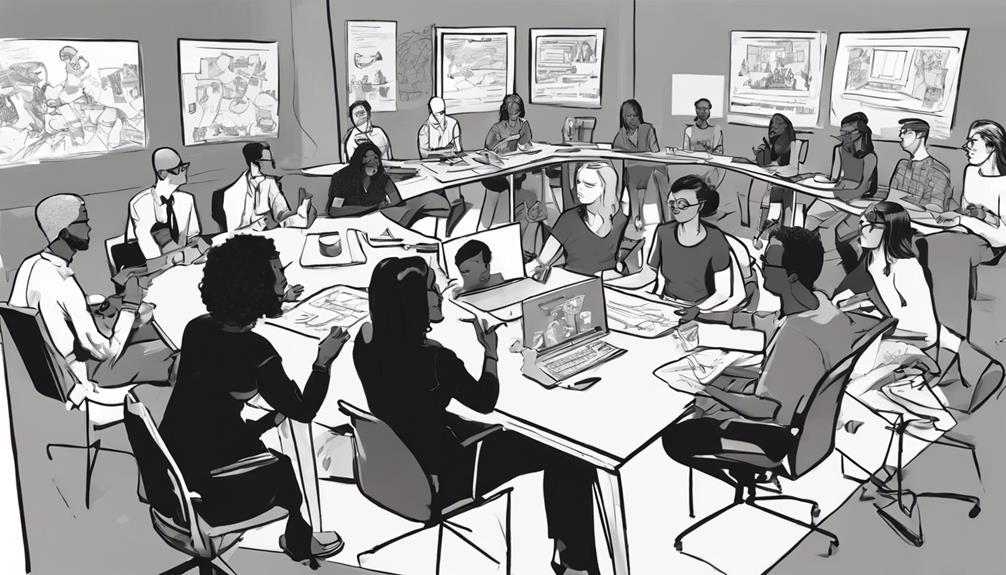
The Stanford D.School offers a Virtual Crash Course in Design Thinking that introduces essential concepts through hands-on activities and real-world examples. This fast-paced course is designed to provide participants with a practical understanding of design thinking, focusing on problem-solving and innovation.
Through the virtual crash course, you'll immerse yourself in the design thinking process, gaining valuable insights into how to tackle challenges creatively.
By participating in this program, you'll engage in interactive activities that simulate real-world design problems, allowing you to apply design thinking principles in a practical setting. The Stanford D.School's virtual crash course equips you with the tools and techniques needed to approach problems from a human-centered perspective, fostering innovation and creativity in your work.
Join the Stanford D.School's Virtual Crash Course to enhance your design thinking skills and unleash your creative potential in problem-solving and innovation.
Coursera: Design Thinking for Innovation
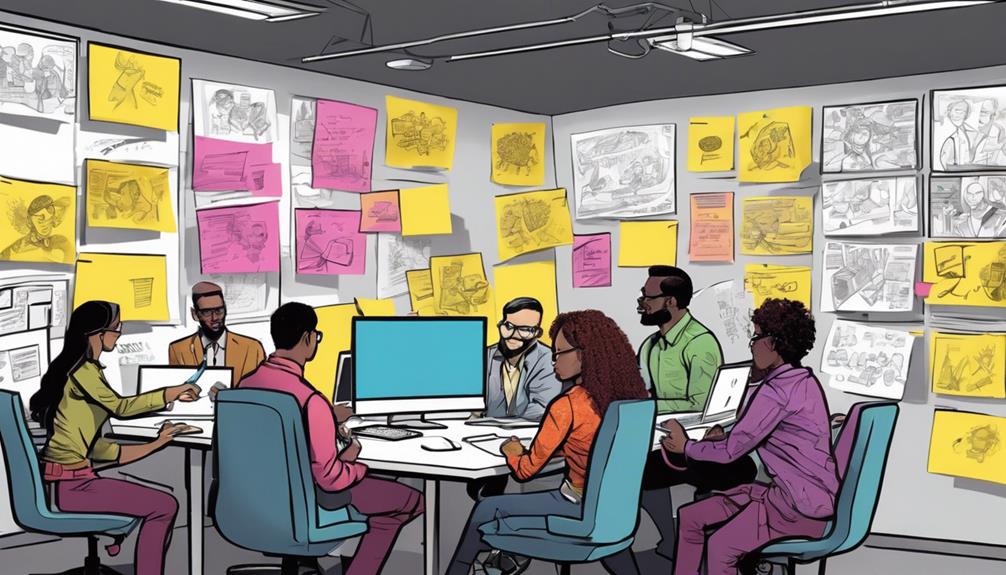
Covering design thinking fundamentals and problem-solving techniques, Coursera's 'Design Thinking for Innovation' specialization emphasizes user-centered design and innovative solutions in a collaborative online learning environment. This program is ideal for beginners aiming to enhance their design thinking skills through practical applications of empathy, ideation, prototyping, and testing in project-based courses. Learners have the option of enrolling for free, with the choice to purchase a certificate upon completion for a fee. With a high rating from user reviews, Coursera's 'Design Thinking for Innovation' offers a structured approach to understanding and implementing design thinking principles effectively.
| Coursera's 'Design Thinking for Innovation' | |
|---|---|
| Emphasis | User-Centered Design |
| Skills Acquired | Empathy, Ideation, Prototyping, Testing |
| Cost | Free to Enroll, Certificate for a Fee |
| User Reviews | Highly Rated |
| Suitability | Beginners |
MIT: Design Thinking and Innovation
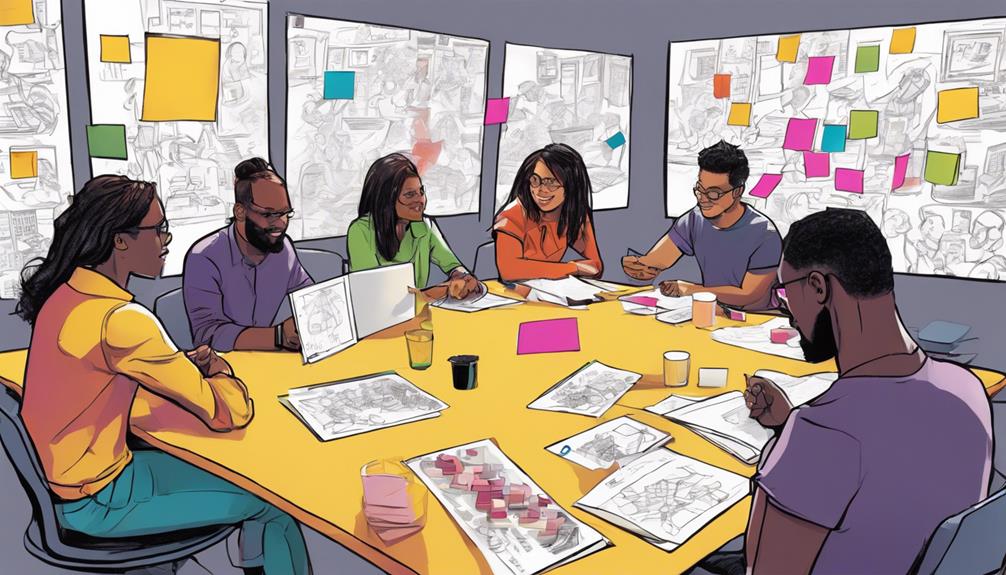
MIT's Design Thinking and Innovation program emphasizes human-centered design to drive innovation and growth.
Key learning objectives include enhancing problem-solving skills through group projects and assignments.
Gain practical application insights ideal for implementing design thinking in your work or business.
MIT's Approach to Design Thinking
Exploring MIT's approach to Design Thinking and Innovation reveals a focus on driving growth and innovation through a human-centered design approach. The program, spanning 3 months, offers a thorough curriculum on the design thinking process and innovation strategies.
With a stellar 4.6-star rating, MIT's course places a strong emphasis on practical application through engaging group projects and assignments. Participants not only acquire expertise in problem-solving, ideation, and prototyping but also develop the skills needed to effectively address complex challenges.
Ultimately, MIT's Design Thinking and Innovation course equips professionals with the necessary tools to spearhead innovative initiatives and steer business success. This program stands out for its hands-on approach, enabling learners to apply design thinking methodologies in real-world scenarios, fostering a deep understanding of how to create impactful solutions that resonate with end-users.
Key Learning Objectives
Participants in the Design Thinking and Innovation program at MIT will master practical skills in problem-solving, ideation, prototyping, and testing over a 3-month online format.
The key learning objectives include understanding Design Thinking principles, developing proficiency in problem-solving techniques, and learning about the iterative design process.
Through this program, you'll explore human-centered design approaches to tackle complex challenges effectively.
By engaging in hands-on activities and group projects, you'll enhance your ability to generate innovative solutions that resonate with user needs.
The course aims to equip you with the knowledge and tools to apply Design Thinking methodologies in real-world scenarios across diverse industries.
Practical Application Insights
Gain practical insights into problem-solving methodologies and innovative solutions through MIT's Design Thinking and Innovation program, focusing on driving innovation and growth. The program offers participants practical tips on how to approach real-world challenges using design thinking principles effectively. By emphasizing problem-solving methodologies, MIT equips individuals with the tools needed to generate innovative solutions. Through group projects and assignments, students get hands-on experience applying design thinking concepts to drive creativity and strategic thinking. The 3-month course duration provides a structured learning environment for mastering these principles. Here's a table to showcase some key highlights of MIT's Design Thinking and Innovation program:
| Practical Application Insights |
|---|
| Emphasis on design thinking process |
| Hands-on experience through group projects |
| Focus on problem-solving methodologies |
| Enhancement of creativity and strategic thinking |
Interaction Design Foundation: Design Thinking
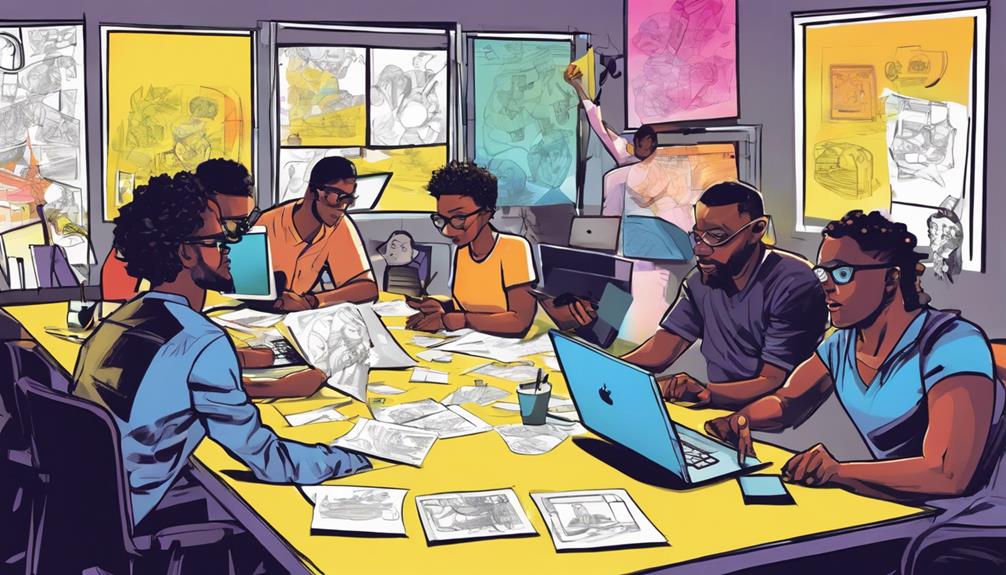
You'll find that the Interaction Design Foundation's Design Thinking program explores core concepts like empathy and prototyping.
This certification offers practical insights for applying design thinking in real-world scenarios.
Core Design Thinking Concepts
Through the Interaction Design Foundation's Design Thinking course, students explore fundamental concepts like empathy, ideation, prototyping, and testing. Here's what you'll investigate:
- User-Centric Approach: The course emphasizes understanding users' needs, desires, and challenges to develop solutions that truly resonate with them. By putting the user at the center of the design process, you'll learn how to create meaningful and impactful products.
- Empathy: Design Thinking stresses the importance of empathy, enabling you to step into the shoes of your users, understand their experiences, and uncover insights that drive innovation. By empathizing with users, you can design solutions that address their real-world problems effectively.
- Prototyping: You'll learn hands-on techniques to quickly bring your ideas to life through prototyping. Prototyping allows you to test and iterate on your concepts, gathering valuable feedback early in the design process to refine and improve your solutions.
Practical Application Insights
Explore practical application insights in the Interaction Design Foundation's Design Thinking Certification program, focusing on user-centric problem-solving and collaboration.
The online course delves deeply into understanding user needs, emphasizing empathy to uncover insights that drive innovation. By honing skills in ideation, prototyping, and testing, participants learn to create innovative solutions that resonate with users.
The program equips individuals with a toolkit of methodologies to effectively apply design thinking in diverse settings, enabling them to tackle complex problems with a user-centered approach.
Through hands-on projects and real-world case studies, students gain practical experience in developing designs that prioritize user satisfaction.
By fostering a culture of collaboration and continuous improvement, the course empowers learners to drive innovation within their organizations and deliver impactful solutions that meet user needs effectively.
Join the program to cultivate your expertise in user-centric design and lead the way in fostering innovation.
Cornell University Design Thinking Certificate
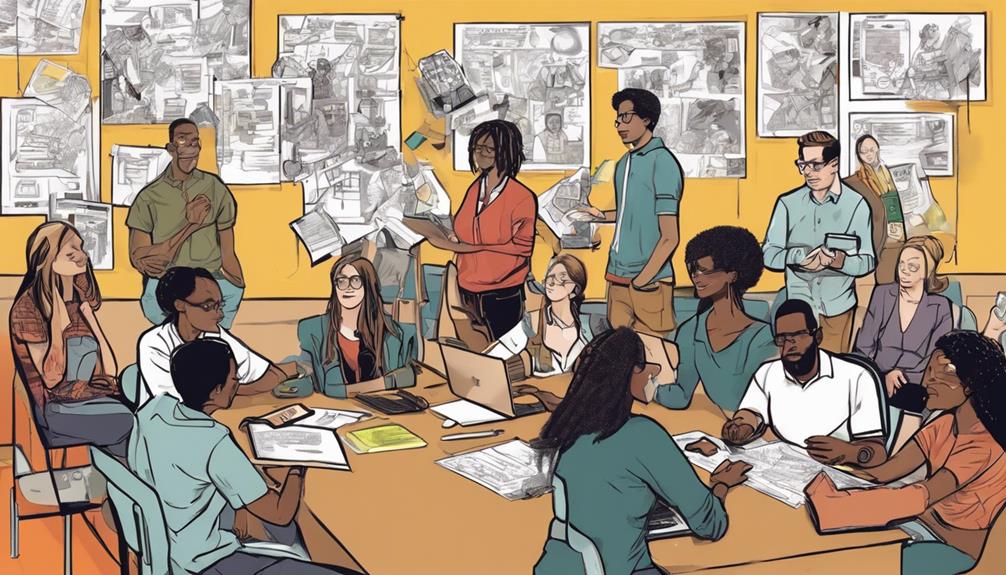
The Cornell University Design Thinking Certificate program offers an in-depth online training lasting 6 months. This certificate focuses on product, service, and infrastructure development, providing practical skills for innovative solutions. Priced at $3,750 USD, it's ideal for those seeking a human-centered approach to design and problem-solving.
Here are three key highlights of the program:
- Comprehensive Curriculum: The program covers a wide range of topics essential for design thinking, such as empathy in design, prototyping, and testing solutions.
- Expert Instructors: Participants learn from industry experts with vast experience in applying design thinking principles to real-world projects.
- Hands-On Projects: Through hands-on projects, participants get the opportunity to apply their newly acquired skills in a practical setting, enhancing their understanding of the design thinking process.
Consider enrolling in the Cornell University Design Thinking Certificate program to enhance your design thinking capabilities and drive innovation in your projects.
Stanford University Design Thinking Bootcamp
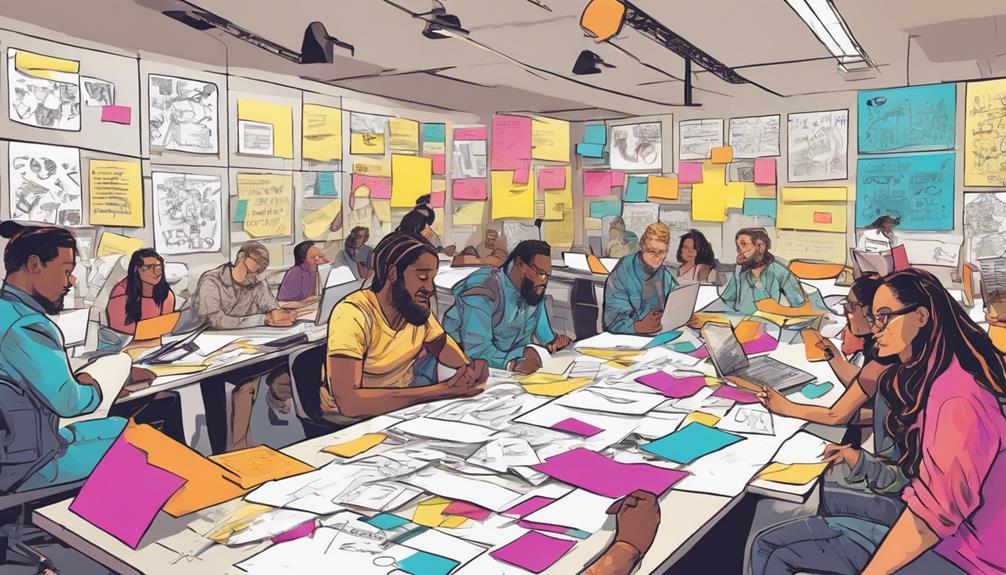
Consider broadening your design thinking skills by immersing yourself in the intensive 4-day in-person Stanford University Design Thinking Bootcamp. This program, focusing on human-centered design, allows participants to tackle real business challenges through hands-on activities, ideation sessions, and prototyping exercises. Priced at $14,000 USD, the bootcamp offers an in-depth exploration into design thinking methodologies, making it ideal for individuals and teams aiming to enhance their problem-solving and innovation skills.
| Key Features | Details |
|---|---|
| Duration | 4 days |
| Approach | Human-centered design |
| Activities | Hands-on tasks, ideation sessions, prototyping exercises |
| Cost | $14,000 USD |
| Target Audience | Individuals and teams seeking to boost problem-solving and innovation capabilities |
The Stanford University Design Thinking Bootcamp is a valuable opportunity to learn from experts and gain practical experience in applying design thinking principles to real-world problems.
The Design Gym Design Thinking Bootcamp

Looking for ways to enhance your design thinking skills in a hands-on and collaborative environment? The Design Gym Design Thinking Bootcamp might be the perfect fit for you. Here are some key points to keep in mind:
- Interactive Program: The Design Gym Bootcamp offers a one-day in-person experience focused on practical hands-on exercises and collaborative problem-solving strategies.
- Cost-Effective: Priced between $595-$675 USD, this bootcamp is ideal for individuals and small teams seeking to enhance their design thinking skills without breaking the bank.
- Real-World Application: Participants can expect to learn essential design thinking methodologies and techniques that can be immediately applied to tackle real-world challenges effectively.
The Design Gym Design Thinking Bootcamp aims to equip attendees with the necessary tools and mindset to foster innovation and creativity in their professional endeavors.
If you're interested in deepening your understanding of design thinking through immersive learning experiences, this program could be a valuable investment in your skill set.
Frequently Asked Questions
How Do You Train Design Thinking?
To train design thinking, start by understanding methodologies like empathizing, defining, ideating, prototyping, and testing. Explore programs from IDEO U, Stanford d.school, Coursera, and MIT for certifications. Enhance problem-solving skills, creativity, and innovation.
Is Design Thinking Course Worth It?
You think design thinking courses are just another expense, but they're a game-changer. They boost problem-solving skills, fuel innovation, and make you a hot commodity in the job market. Worth it? Absolutely.
Is IBM Design Thinking Worth It?
IBM Design Thinking is worth it for fostering user-centered innovation. It empowers teams to understand user needs, prototype rapidly, and iterate effectively. This methodology enhances collaboration and delivery of solutions aligned with user expectations.
Where Do I Start With Design Thinking?
Start with understanding user needs and problem areas. Explore beginner-friendly design thinking courses like IDEO U Foundations or online resources. Practice empathy, ideation, and prototyping to develop innovative solutions. Engage in collaborative projects for hands-on experience.
Conclusion
So, now that you've learned about the top design thinking training programs, you're ready to immerse and release your creativity like a painter with a blank canvas.
These programs will equip you with the tools and mindset to approach challenges with a fresh perspective and generate innovative solutions.
Don't hesitate to enroll in one of these courses and start transforming your approach to problem-solving today!
